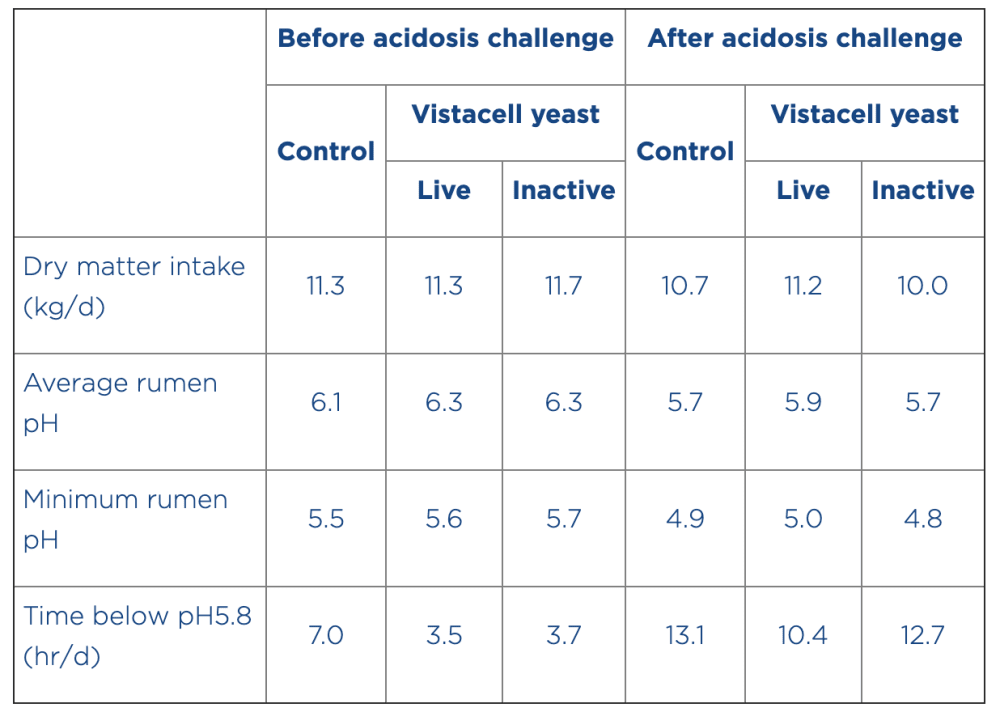The role of Vistacell live yeast in high starch beef finishing rations
Published Monday, 29th June 2020One of the biggest challenges facing beef finishing units is the need to provide the energy and protein levels required to drive rapid growth without causing digestive upsets. And it’s particularly important during the final 100 days of the finishing period, when maximising daily liveweight gain (DLWG) is essential to overall profitability.
“Rolled cereals, maize meal, distillers grains and soya hulls are all commonly used ingredients in finishing beef rations,” explains Ms Kayley Barnes, AB Vista’s Ruminant and Equine Technical Manager. “However, the inclusion levels need to be carefully managed to avoid upsetting the rumen, especially when it comes to rolled barley or wheat.”
Rapid starch breakdown
Depending on forage quantity, type and quality, concentrates can be included in excess of 10kg/head/day and can account for over 50% of the dry matter intake (DMI) in finishing diets. However, the limit will depend on how certain cereals interact with one another, and the resulting impact on the rumen environment.
“Some cereals have a faster rate of starch breakdown in comparison to others. For example, the rate of starch breakdown in rolled barley and wheat is quicker than in maize meal,” adds Ms Barnes.
Some units will feed up to 60% of the total concentrate as rolled barley, this can overload the rumen due to the fast release of starch, especially if insufficient fibre is provided. However, if rolled barley is included at a lower rate (below 40% of total concentrate) alongside a slower degradable starch source such as maize meal (up to 50% of total concentrate) it creates a more balanced release of starch in the rumen.
“The inclusion of cereal starches is necessary to supply the energy needed to optimise DLWG in intensive finishing units. But issues arise when high levels of starch are degraded too quickly, causing overload that changes the microorganism population within the rumen,” Ms Barnes explains.
Live yeast benefits
When the balance of microorganisms is altered within the rumen, it can negatively affect rumen function and result in a rumen pH drop below 5.8, the threshold for sub-acute ruminal acidosis (SARA) below which digestion is compromised.
“For intensively reared beef cattle, the rumen will typically spend long periods below pH 5.8 unless a live yeast such as Vistacell or rumen conditioner like Acid Buf are used to maintain a balance in the rumen,” Ms Barnes explains.
As the rumen drops further below pH 5.8 fermentation efficiency is even further disrupted as the normal fibre-digesting microbes begin to die off. This delays performance recovery when the rumen pH rises and limits DLWG.
“Reducing the extent and time of any drop in rumen pH is therefore critical if feed conversion efficiency, feed intake and growth performance are to be optimised,” adds Ms Barnes.
Supported by trial work
An independent trial carried out by Agriculture and Agri-Food Canada compared rumen pH fluctuations in beef heifers receiving either 4g/head/day of Vistacell live yeast, the same dose of deactivated yeast, or no yeast. All heifers were fed a balanced mixed ration with an overall 50:50 forage-to-concentrate ratio.
The heifers were then fed a large meal of barley grains following a day during which only 50% of the normal ration was fed. Both forms of the yeast significantly improved average rumen pH and reduced time spent below pH 5.8 (Table 1), with the live Vistacell the most effective.
Table 1 – Effect of yeast addition and viable state on rumen pH in beef heifers (Source: Agriculture and Agri-Food Canada, 2013)
“Although all treatments were affected by the acidosis challenge, DMI was maintained only by the active Vistacell treatment. After the acidosis challenge, the DMI for the inactivated yeast and control groups fell by 5% and 15% respectively,” Ms Barnes explains.
The cattle receiving the metabolically active Vistacell also appeared to recover from the challenge quicker, tending to have a higher post-acidosis average rumen pH and less time spent below pH 5.8.
“This research shows just how much impact Vistacell live yeast can have in helping to support rapid, efficient and profitable finishing,” Ms Barnes concludes.
MORE INFORMATION:
Latest news
Stay ahead with the latest news, ideas and events.

Online Feed Fibre Calculator
Calculate the percentage of dietary fibre in your feed
Our calculator is designed for nutritionists and uses averages of global raw materials to calculate the dietary fibre content (plus other more in-depth fibre parameters) of finished animal feed. These parameters are available within AB Vista’s Dietary Fibre analysis service (part of our NIR service).
Sign up for AB Vista news
A regular summary of our key stories sent straight to your inbox.
SUBSCRIBE© AB Vista. All rights reserved 2025
Website T&Cs Privacy & Cookie Policy Terms & Conditions of Sale University IDC policy Speak Up Policy


























